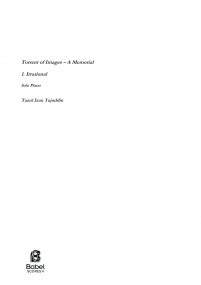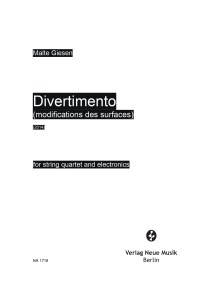Liquid Identities No:3(Segah-Uşşak)
ISMN : 979-0-2325-4859-3
- Login to create your own lists
This music is mainly build on Segah Makam which features Segah scale. Segah scale consists of these pitches:
Segah(Approximately14 cents lower than the equal tempered B*)-Çargah(C)-Neva(D)-Hüseyni(E)-Eviç(Approximately12 cents lower than the equal tempered F#)-Gerdaniye(G)-Muhayyer(A)-Tiz Segah.
Segah Makam traditionally starts its movement from the root of the makam which is Segah pitch and rises up to the octave (Tiz Segah) and even further in climactic passages. It resides on the initial Segah pitch to mark the end . Through its journey it benefits from some other tetrachords to enhance the harmonic spectrum; thus F# become F natural in decsending gestures and occasionally high A# becomes A natural.
Uşşak makam is also used in 1/4 part of the piece which is towards the end. As in Segah Makam Uşşak Makam also features Uşşak scale as its backbone which consists of these pitches:
Dügah(A)-Segah(a lower B than it is used in Segah makam)-Çargah(C)-Neva(D)-Hüseyni(E)-Acem(F)-Gerdaniye(G)-Muhayyer(A).
Formal Structure:
This music resembles to a traditional Taksim performance (improvisatory sections inMakam Music ) with its structural organisation. Furthermore, the piece starts with an optional Segah taksim and ends with an Uşşak taksim. The two“taksim” sections apart from marking the beginning/ending of the music, somehow conveys the idea of “controlled spontaneity” framed by non cyclic structural organisation of 21 th century music.
Extended Techniques:
Throughout the piece Multiphonics are performed by playing and singing simultaneously.
*Western Music equivalents of Turkish Makam Scale degrees are given with alphabetical notation !
Pages - 8




